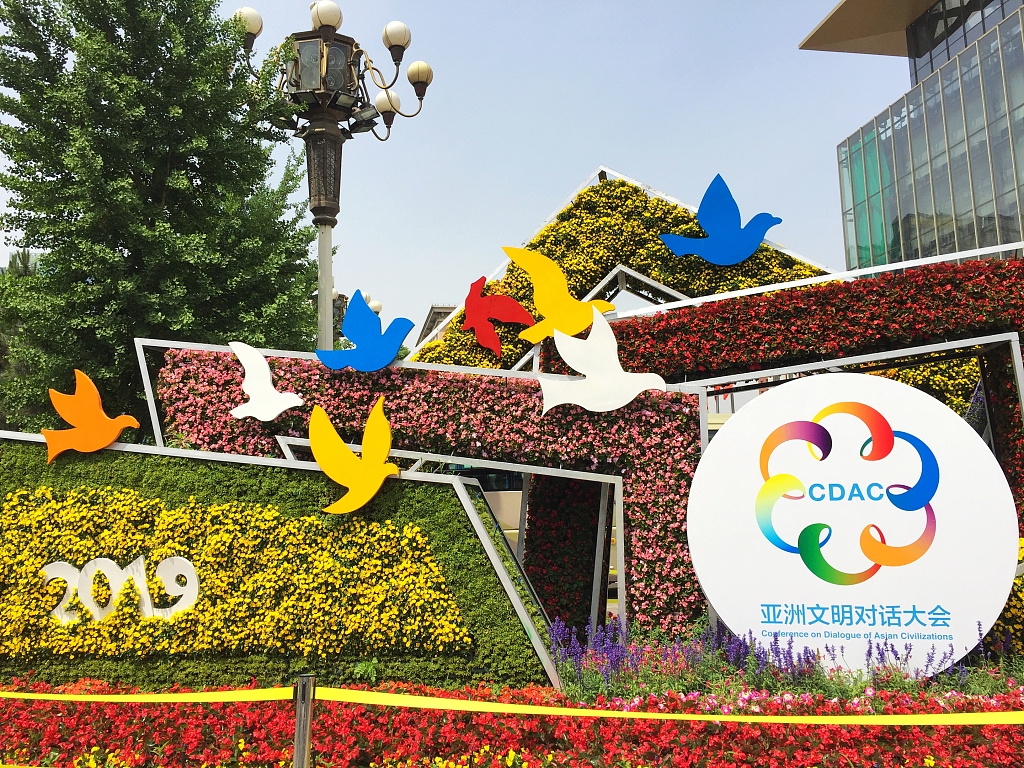Will CDAC serve as a catalyst for Asian exchange?
- By Niranjan Sahoo
 0 Comment(s)
0 Comment(s) Print
Print E-mail China.org.cn, May 16, 2019
E-mail China.org.cn, May 16, 2019

In his famous speech at UNESCO five years ago, Chinese President Xi Jinping called for the exchange of ideas and mutual learning among civilizations to build a community with a shared future. To state the exact words of his celebrated speech, "Civilizations come in different colors, and such diversity makes exchange and mutual learning among civilizations relevant and valuable; civilizations are equal, and such equality makes exchange and mutual learning among civilizations possible; civilizations are inclusive, and such inclusiveness gives exchange and mutual learning among civilizations the drive to move forward."
An unparalleled exchange
Xi's well-articulated speech is finally bearing fruit with the kick-off of the Conference on Dialogue of Asian Civilizations (CDAC) in Beijing on Wednesday. On the heels of the recently-concluded second Belt and Road Forum for International Cooperation, also in Beijing, CDAC is expected to grant opportunities for Asian countries to explore cultural and societal cooperation, and to build greater trust and confidence among their peoples, especially the youth. The ultimate goal, as emphasized by President Xi, is to address the problems faced by human society today. So now, more than 2,000 delegates from 47 countries in Asia and other parts of the world, including several senior political and diplomatic heads, will soon assemble for a week-long cultural event in Beijing, the sheer scale and magnitude of which has no parallel. CDAC will draw representatives from such diverse vocations as think tanks, film and television, media and tourism, education and other cultural fields. The grand Asian Cultural Exchange aims to attract more than 30,000 people from China and abroad, and a number of educational and academic exchanges are also on the menu.
Why Asia?
The focus of CDAC is, by name and practice, Asia. So why Asia? The reason could be that Asia is the cradle of all major religions of the world, including Christianity, Islam, Buddhism and Hinduism. Or that it is the original birthplace of several advanced, ancient civilizations that prospered around major rivers such as the Nile, Tigris, Euphrates, Ganges, Indus, Yellow and Yangtze. Despite this legacy of human civilization, however, few efforts have been made to establish a dialogue among Asian stakeholders at large. Of course, regional and sub-regional dialogues have taken place among groups of Asian countries, but these have been mostly limited to single themes like connectivity, language, culture or religion. So Asia has been waiting for a mega-exchange of culture and civilization for a long time. China – with its centrality in Asia and its large-scale projects such as the Belt and Road Initiative (BRI), which aims to connect two-thirds of the world – is the natural choice to initiate the CDAC. Events like the Asian Culture Carnival and the Asian Civilization Parade will not only be an opportunity for non-Asian delegates to witness the rich and diverse cultures of Asia, but for Asian delegates as well to gain more appreciation for the similarities and differences between their own cultures and those of their Asian neighbors.
Unity in the face of challenges
The vision of CDAC testifies to such goals. The theme of the conference is "Exchange and Mutual Learning among Asian Civilizations and a Community with a Shared Future," which speaks both to Asia's rich heritage and its common destiny. A shared future is indeed a necessity in a time when most countries are facing similar challenges, from climate change to the changing nature of globalization and the market economy, from technology to the rising spectre of international terrorism, and others. Countries and communities in Asia need to come together often and explore collective action and multi-level cooperation in order to safeguard our common future. Asian values and cultural practices, such as the Hindu-Buddhist philosophy of tolerance and cooperation and the Confucian philosophy of discipline and respect, can provide direction to national development and global governance.
As for now, with CDAC China takes the lead, but we can hope that this event may act as a catalyst for other Asian countries to open up more such spaces in the future.
Niranjan Sahoo is a columnist with China.org.cn. For more information please visit:
http://www.china.org.cn/opinion/NiranjanSahoo.htm
Opinion articles reflect the views of their authors only, not necessarily those of China.org.cn.
If you would like to contribute, please contact us at opinion@china.org.cn.






Go to Forum >>0 Comment(s)